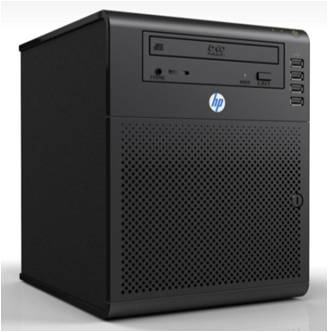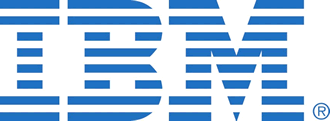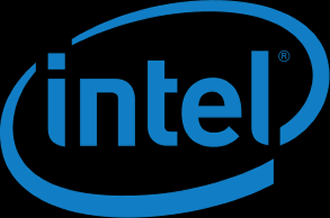 A price war has developed on the server front after multinationals faced competition from original design manufacturers (ODMs) that make the machines.
A price war has developed on the server front after multinationals faced competition from original design manufacturers (ODMs) that make the machines.
 A price war has developed on the server front after multinationals faced competition from original design manufacturers (ODMs) that make the machines.
A price war has developed on the server front after multinationals faced competition from original design manufacturers (ODMs) that make the machines.
 A report said that integrated infrastructure and platforms – that is to say vendor systems containing servers, disk storage, networking kit and systems management software – grew by 38 percent in the third quarter of last year.
A report said that integrated infrastructure and platforms – that is to say vendor systems containing servers, disk storage, networking kit and systems management software – grew by 38 percent in the third quarter of last year.
 Manufacturers of X86 based servers are taking market share from intermediary companies such as Dell and HP.
Manufacturers of X86 based servers are taking market share from intermediary companies such as Dell and HP. Compared with the rest of the IT market, the worldwide integrated infrastructure market grew by a healthy 28.1 percent during the third quarter of this year.
Compared with the rest of the IT market, the worldwide integrated infrastructure market grew by a healthy 28.1 percent during the third quarter of this year.
That’s according to IDC, which said reveues increased to $2.3 billion, generating over 898 petabytes of storage capacity shipments, up by 46.6 percent compared to Q3 2013.
IDC research director Jed Scaramella said that over the past year IT vendors invested heavily in product portfolio and that’s resulted in more adopting in customers’ IT.
IDC defines integrated platforms as those sold with pre-integrated packaged software and customised system engineering for software development, databases, testing and integration tools. Integrated infrastructure are for general purpose workloads.
In the first category, Oracle was the leader in the pack, followed by IBM, and HP. Oracle showed revenue growth of 7.1 percent, IBM’s revenue growth fell by 18 percent, while HP showed a massive revenue growth of 285 percent.
In the second category, VCE saw a 45.7 percent growth in the quarter, Cico/Netapp showed a 32.2 percent growth while HP surprised with a 273.3 percent revenue growth in the third quarter of 2014.
 Server company Rackspace has joined an IBM inspired server group, snubbing its primary chip supplier, Intel.
Server company Rackspace has joined an IBM inspired server group, snubbing its primary chip supplier, Intel.
The Openpower foundation was formed a year ago and has something like 80 worldwide members, working on producing server technology built using IBM rather than Intel microprocessor architecture.
The group already has members including Nvidia, Tyan and Google.
Rackspace has been working behind the scenes with the group for over 18 months, but openly declared its hand yesterday. Senior director Aaron Sullivan said that Openpower has an open firmware stack, and better access to chips, memory and storage than, for example, Intel.
Other additions to the powerful consortium include Lawrence Livermore National Laboratory, the Mumbai Indian Institute of Technology, and worldwide distributor Avnet.
Openpower said its first summit will be held mid March at the San Jose Convention Center in California.
 Yesterday we reported that server revenues in Europe the Middle East and Africa (EMEA) only showed minor growth.
Yesterday we reported that server revenues in Europe the Middle East and Africa (EMEA) only showed minor growth.
Those were figures from Gartner. But data from its deadly rival IDC indicate that things were less gloomy for server vendors in the third quarter of this year.
IDC said vendor revenues worldwide rose by 4.8 percent, year on year, to represent revenues of $12.7 billion.
This, said IDC, is the second quarter in a row that the server market has shown a year on year increase in revenue terms.
And shipments in the quarter improved 5.7 percent year on year, representing 2.38 million units. This is largely down to increased spending on hyperscale datacentres. IDC believes it is seeing signs of companies refreshing their servers, which is good news for 2015 too.
There is a difference depending on the type of server. Volume systems showed 8.8 percent revenue growth, midrange systems showed an 18.4 percent growth year on year. But high end enterprise systems plummeted by –23.2 percent, year on year.
IDC figures show HP is n number one place, followed by IBM, Dell, Cisco and Oracle. The “ODM Direct” category is interesting because these are largely Taiwanese companies producing unbranded boxes for multinationals – with prices to match. This chart shows the changes.
Like Gartner, IDC saw a recline in non X86 servers – the thirteenth consecutive quarter of revenue decline. IBM is in pole position here, with a share of 60.8 percent share. Blade servers accounted for 18 percent of total server revenues in the quarter.
 Shipments of servers in Europe, the Middle East and Africa (EMEA) fell by four percent in the third quarter of 2014 but revenues rose by 1.2 percent year on year to amount to $2.9 million.
Shipments of servers in Europe, the Middle East and Africa (EMEA) fell by four percent in the third quarter of 2014 but revenues rose by 1.2 percent year on year to amount to $2.9 million.
Gartner said that growth seen in the second quarter of this year was “a short lived phenomenon and marginal revenue growth…highlights the fragility of demand”.
But despite this, revenues grew for the third consecutive quarter following 10 previous quarters where revenues declined.
HP managed to grow its revenue lead in the regions with 6.4 percent growth, although shipments declined by 8.2 percent. The growth was largely accounted for by demand for rack optimised and blade system.
Dell managed to displace IBM as second in place in terms of both revenues and shipments. It managed to grow nine percent in revenues and 3.4 percent in shipments. IBM, of course, is ridding itself of its X86 business to Lenovo, while its RISC shipments were hit by a fall in demand for Unix systems. Its lucrative mainframe business is in stasis as Big Blue readies new launches.
Gartner thinks one of the problems is that IT departments in enterprises are struggling because there are datacentre modernisation initiatives which means they are taking their eyes off the ball in the traditional server marketplace.
If RISC, the Intel Itanium and Unix revenues are counted as one, they fell in the quarter by 13.2 percent.
 A report said that Taiwanese original design manufacturer (ODM) Quanta will supply search engine giant Google with its servers in 2015.
A report said that Taiwanese original design manufacturer (ODM) Quanta will supply search engine giant Google with its servers in 2015.
Google has long abandoned the habit of using “brand name” servers from the likes of Dell, HP or IBM/Lenovo.
The news, reported in Digitimes, confirms a recent survey saying that the ODMs, which often build machines that are then subsequently branded, are taking market share from the brand names.
It’s not just Google that is following this path. Amazon, Facebook and Microsoft also buy their servers direct. Quanta has benefited more from these changes in buying patterns because it has been quicker to realise the money involved than rivals such as Taiwanese company Inventec.
Until comparatively recently, Quanta’s entire business was building notebook machines, subsequently branded by others. But the bottom has somewhat fallen out of the notebook business with the rise of tablets and smartphones.
 Roadmaps seen by sources close to chip manufacturer Intel say there’s a series of sea changes for server chips to be released in the second quarter of 2015.
Roadmaps seen by sources close to chip manufacturer Intel say there’s a series of sea changes for server chips to be released in the second quarter of 2015.
According to reporters at Taiwanese wire Digitimes, Intel will release processors for servers based on Haswell-EX as it readies other products for workstations too.
It is scheduled to introduce Skylake Xeons in the third quarter as well as Broadwell Xeons during the third quarter of next year.
That means – as is the tradition at Intel – we’ll see several processors phased out including Xeon Phis, Itaniums and other microprocessors, according to the wire.
Meanwhile the same media says that Intel will manage to ship a milllion units of its so-called “Education Tablets” this year. The machines are largely aimed at developing markets. Shipments will exceed three million units in 2015.
 Megadistributor Avnet said it has been appointed as a global Lenovo route to market.
Megadistributor Avnet said it has been appointed as a global Lenovo route to market.
This follows Lenovo’s acquisition of IBM’s System x (X86) server business early in the month.
Avnet said it will sell Lenovo servers in over 40 different countries around the world.
As well as Lenovo System x systems, Avnet will sell BladeCenter and Flex System blades and switches, X86 integrated system, NextScale and iDataplex servers, software and maintenance.
But this does not mean Avnet is waving goodbye to IBM. It’s worked with Big Blue for nearly 30 years and will continue to distribute IBM Power Systems, Storage Systems, Power Flex servers, training, software and services.
Tony Madden, a senior VP at Avnet Global said: “Avnet is working closely with Lenovo to ensure a seamless transition for existing System x channel partners and their customers.”
 A few weeks back we reported that the lucrative datacentre market could well be the target for new vendors to enter the fray.
A few weeks back we reported that the lucrative datacentre market could well be the target for new vendors to enter the fray.
Now there’s some hard evidence for that. Taiwanese firm Quanta Computer, which previously played in the original design manufacturer (ODM) game, and made notebooks for the major brands, has branched out into the server market.
Digitimes reports that Quanta has completely re-invented itself and is positioning itself to sell into the European datacentre market.
It is offering servers and services to European datacentres and has hired a sales team specifically for the territory.
It faces stiff competition from the likes of HP and Dell. But the advantage it has is that it has its own manufacturing and further has played the very slim margin game when it made notebooks for multinational brands like HP and Dell.
The move is likely to be good value for the datacentre buyers because there’s no doubt such moves will prompt something of a price war in the sector.
 In a sign that things wont be what they were in the past, HP said it has announced two servers based on ARM architecture, rather than the old fashioned Intel stuff.
In a sign that things wont be what they were in the past, HP said it has announced two servers based on ARM architecture, rather than the old fashioned Intel stuff.
The two enterprise class servers use 64-bit ARM microprocessors which it said “offer value choice in their compute strategy”. Translated out of marketing speak, this means ARM based chips are much cheaper than Intel X86 chips.
HP is also offering a production platform letting software developers create, test and port applications to the ARM server.
The servers belong to HP’s Proliant Moonshot family – the company claims that they will let companies scale to any workload, and are specifically aimed at datacentres.
The HP Proliant m400 server is part of a strategy the company has developed over some years to fit high engineering standards.
“ARM technology will change the dynamics of how enterprises build IT solutions to quickly address customer challenges,” said Antonio Neri, senior vice president and general manager, Servers and Networking, HP. “HP’s history, culture of innovation and proven leadership in server technology position us as the most qualified player to empower customers with greater choice in the server marketplace.”
The servers will support Ubuntu, Metal as a Service (MAAS) software preinstalled, and also offers IBM Informix.
HP customers already include Sandia National Labs, the University of Utah and Paypal. The servers are available today.
 Sales of worldwide integrated infrastructure and platforms rose by a third in the second quarter of this year with a net worth of $2.4 billion, compared to the same quarter a year back.
Sales of worldwide integrated infrastructure and platforms rose by a third in the second quarter of this year with a net worth of $2.4 billion, compared to the same quarter a year back.
IDC defines integrated infrastructure and platforms as pre-integrated certified systems containin server hardware, disk storage systems, networking equipment and systems management software.
IDC said over 833 petabytes of storage capacity shipped, up 63.4 percent compared to the same quarter in 2013. All in all, the first half of 2014 showed the market grew by 35.9 percent compared to the first half of 2013 and was worth $4.3 billion.
IDC believes that integrated systems are considered critical by business. Jed Scaramella, research director of enterprise servers at IDC said enterprise customers were “bullish” in adopting integrated systems and many more consider these when making IT procurement choices.
The top vendors in integrated platforms, were Oracle, IBM, HP, Hitachi and the usual “others”. But an examination of the revenue growth delivered by these companies showed that HP managed to grow revenues by 92.1 percent compared to the same quarter in 2013, while IBM was in stasis and Oracle grew by 18.3 percent.
In the field of worldwide integrated infrastructure, the top three spots were occupied by VCE, Cicsco/Netapp and EMC.
 Another survey on the growth of big data technology and services underlines the growth in this sector of the IT market.
Another survey on the growth of big data technology and services underlines the growth in this sector of the IT market.
Market research company IDC predicts that the western Eurpean big data market will grow between now and 2018 at a compound annual growth rate of 24.6 percent.
IDC said that western European organisations are catching up with the USA rapidly because of a combination of smaller datasets, challenging economies and privacy concerns.
The market sector is segmented into infrastructure, such as servers, storage and networking; software; and services. Storage was worth $536 million in 2013, while the server market is worth $314 million. But the largest segment is software, worth an estimated $698 million last year, followed by services which was worth $593 million.
IDC said the UK, Benelux and the Nordic countries are showing higher initial adoption, but Germany and France are fast catching up.
But Alys Woodward, research director at IDC, warned that getting value from investments in big data is far from guaranteed. Vendors need to clearly demonstrate to their customers how their organisations can benefit from adoption.
 A report from Gartner today suggested that original design manufacturers (ODMs) are set to cut out brand vendors in the global X86 server market.
A report from Gartner today suggested that original design manufacturers (ODMs) are set to cut out brand vendors in the global X86 server market.
It estimates that sales of servers by ODMs directly to customers will be worth $4.6 billion by 2018, representing 16 percent or so of the market.
The traditional route to market had OEMs hiring ODMs and selling branded goods. But Gartner reckons that the manufacturers are changing their business models to directly target “hyperscale” customers, that is to say to data centres.
Data centre operators prefer ODM supplied kit because the machines are cheaper and they can customise systems.
Naveen Mishra, a research director at Gartner, said: “Direct engagement with hyperscale data centres is the biggest contributor to ODM growth.” He said that ODM success is right now restricted to server but he thinks that similar technologies, such as storage, will follow suit.
The ODMs are largely based in China and Taiwan so can make cost efficiencies that can’t be replicated in other geographies. They are also aggressive on pricing.